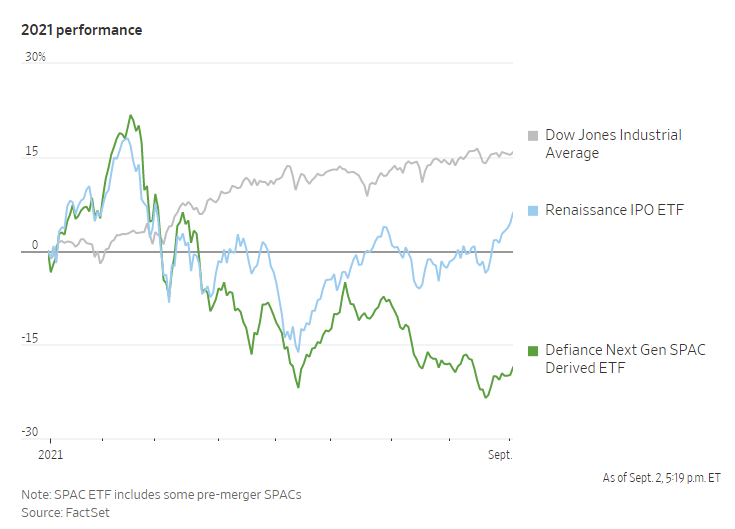Wall Street is unusual in many ways. It is a place where new ideas are often rewarded. It’s also a place where the disaster that follows many new ideas is often ignored.
For example, collateralized mortgage obligations (CMOs) were a new idea in the mid-2000s. They allowed hedge funds to participate in the mortgage market with leverage that generated large returns in a bull market.
Extreme leverage had caused problems in 1998 when a hedge fund almost crashed the global financial markets, and in 1929, when a stock market crash contributed to the Great Depression. But by 2007, risks of leverage seemed to have been forgotten as hedge funds piled into CMOs.
Like many new ideas, this one ended in disaster when the global financial markets crashed in 2008.
SPACs on Wall Street
Earlier this year, another new idea caught the attention of Wall Street. Special-purpose acquisition companies (SPACs) became popular. Promoters raised billions of dollars to pursue acquisitions. Companies acquired by SPACs didn’t have to go through the arduous process of disclosures required for companies doing a traditional stock offering.
The chart below shows that this hasn’t worked very well for investors in SPACs.
SPACs vs. Market Averages and IPOs

Source: The Wall Street Journal.
There are some winners in the group, but overall, experts estimate that investors have lost over $80 billion in SPACs even as broad stock market averages moved up. As the chart shows, traditional IPOs have outperformed the new idea.
None of this should be a surprise. If a company can withstand the scrutiny of the traditional initial public offering (IPO) process, they are likely to pursue that route. That means some SPAC deals were lower-quality companies.
While SPACs may have disappointed many individual investors, Wall Street firms that completed the deals have largely done okay. The deals generate millions in fees whether individual investors make money or not. Hopefully, next time Wall Street sells new ideas, individual investors will think twice.
I don’t like working more than I have to.
That’s why I found a way to beat the market by making one simple trade per week.
Last year, this trade helped me beat the market eight times over.
It’s a great way to accelerate your gains. Click here, and I’ll show you how it works.
Michael Carr is a Chartered Market Technician for Banyan Hill Publishing and the Editor of One Trade, Peak Velocity Trader and Precision Profits. He teaches technical analysis and quantitative technical analysis at the New York Institute of Finance. Mr. Carr is also the former editor of the CMT Association newsletter, Technically Speaking.
Follow him on Twitter @MichaelCarrGuru.





